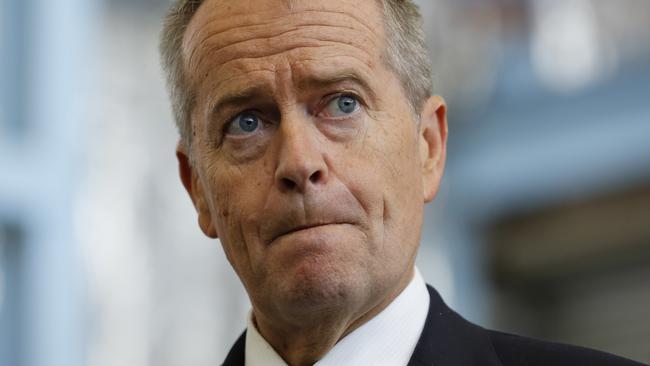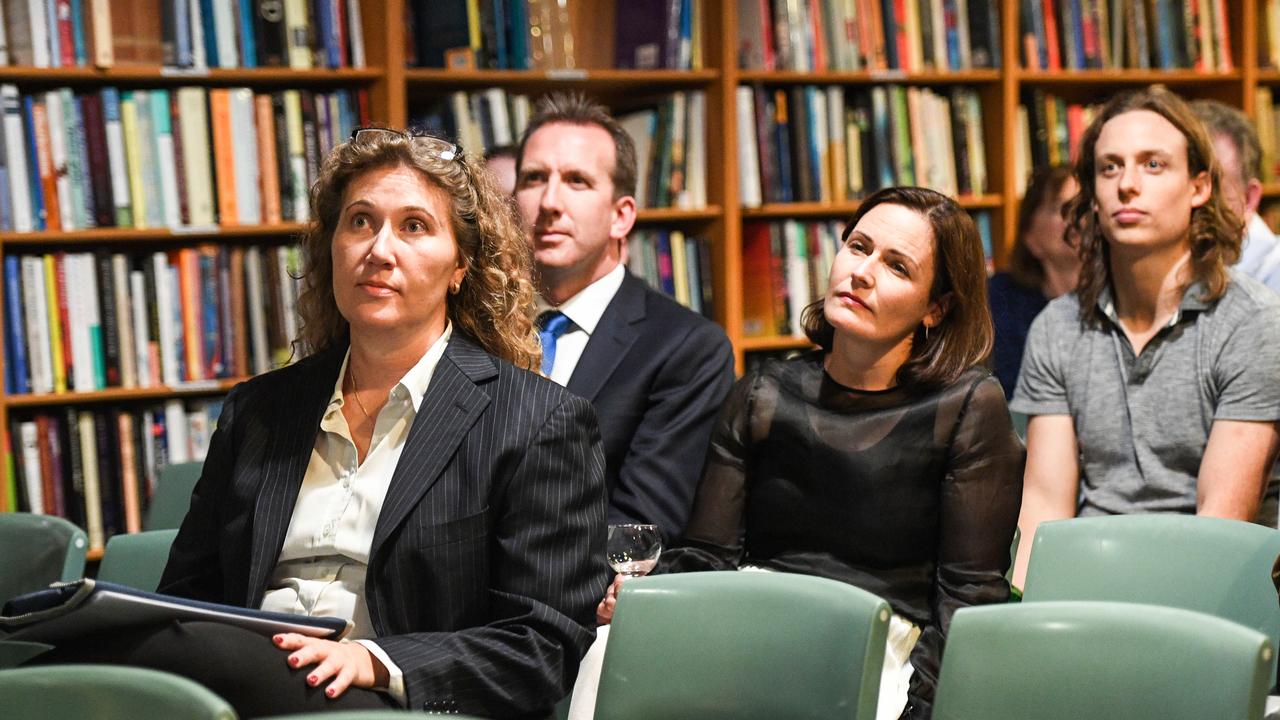Shorten’s ‘magic pudding’ wages war on low-paid
Imposing higher wage rates outside context of improvements to productivity leads to job losses. This is magic pudding economics at its worst.

Bill Shorten has declared the upcoming election will be a referendum on wages. I’m not sure that using wages as an organising principle will actually work, in part because Australia has been conducting an essentially unresolved referendum on wages for more than 100 years.
In many ways, we have not moved on from the 1907 Harvester wage case, which established an arbitrated basic wage to cover the expenses of an unskilled worker, his wife and three children.
The premise was that unless a firm could pay at least the minimum wage, it didn’t deserve to be in business. This was confirmed two years later in another famous case, the BHP case of 1909. There, presiding judge Henry Bournes Higgins declared: “If it is a calamity that this historic mine should close down, it would be still a greater calamity that men should be underfed or degraded … it is necessary to keep this living wage as a thing sacrosanct, beyond the reach of bargaining.” As events panned out, the mine did close down.
The broader context of the Harvester decision was a society without an effective tax-and-transfer system, a labour market dominated by full-time male employment and high rates of import protection for firms forced to pay the basic wage.
Through the years, the debate has oscillated between emphasis on wages meeting the needs of workers, on the one hand, and on the capacity of employers to pay, on the other. Uneasy compromises have emerged, with the relative weight attached to the two factors shifting from time to time.
Of course, the worlds of 1907 and 2019 are fundamentally different when it comes to thinking about the role minimum wages should play. For one thing, we now have a comprehensive tax-and-transfer system that is designed to redistribute income from high-income earners to those less well-off, particularly those with dependent children.
Second, the labour market is far more complex, with more than a third of jobs being part time and female labour force participation exceeding 60 per cent. And, third, the days of firms being cushioned from import competition and other competitive pressures are essentially over.
So let’s take a look at Shorten’s sketchy idea of bringing in a living wage. While refraining from putting any precise figures on what constitutes a living wage, he is claiming 1.2 million workers will benefit from receiving a living wage. Where he seems to have got this figure from is the number of workers who currently receive less than 60 per cent of the median wage. At the moment, the national minimum wage is a tad more than $38,000 a year for a full-time worker and 60 per cent of the median wage is about $42,000.
Relatively few workers receive exactly the national minimum wage — the classifications in many awards start above it. Shorten is hoping to scoop up those workers on the lowest classifications where award wages amount to less than $42,000 a year on a full-time basis. He also mentions apprentices and those with a disability on supported wages as benefiting from his living wage idea.
Workers on wages above this figure will receive a lower rate of increase in their wages according to the Shorten model because they already are paid more than the living wage.
Shorten has also proposed that the Fair Work Commission should take into account the tax-and-transfer system when determining wage rises to achieve the living wage and potentially to phase in any increases. If you are beginning to think this proposal is sounding a tad impractical, you wouldn’t be wrong.
Just imagine the disruption to wage relativities around the $42,000-a-year mark when workers whose earnings are deemed to be just above the living wage get a smaller rise. Note that higher classifications involve greater skill levels and responsibility.
And how can the FWC sensibly take the tax-and-transfer system into account when workers’ circumstances dictate what net benefits are received from the government? A part-time working single mother with three dependent children is in a completely different situation to a full-time working man with no children.
A key issue with the proposal for a living wage is what the effect would be on the employment prospects of those entitled to receive the wage. If the losses of jobs, working hours and training opportunities are sufficiently high, it is conceivable that workers could actually be worse off on balance.
Take this quote from well-known Nobel prize-winning economist Paul Krugman: “So what are the effects of increasing minimum wages? Any Econ 101 student can tell you the answer: the higher wage reduces the quantity of labour demanded, and hence leads to unemployment.”
The key figure in this debate is American economist David Neumark, of the University of California-Irvine. He makes the point that workers who hold on to their jobs and retain their hours of work do benefit from a higher minimum wage.
But he also notes that many low-wage workers do not reside in low-income households. This is also the case in Australia. According to the Household, Income and Labour Dynamics in Australia survey, 13.8 per cent of the lowest paid workers (in the bottom two percentiles) live in the richest 20 per cent of households compared with 13.6 per cent living in the poorest 20 per cent of households.
Neumark finds that the bulk of the evidence indicates higher minimum wages lead to fewer jobs, particularly for the least skilled. This is an important finding given Shorten has singled out apprentices and workers on supporting wages as being those who may gain from his living wage.
Shorten also bizarrely maintains that “boosting wages is good for workers and good for the economy. Consumer spending makes up 60 per cent of the Australian economy. Stagnant wages have held back spending and put a handbrake on economic growth. When low-paid workers get a pay rise, they spend it in the local shops and help small businesses. It’s good for everyone.”
This is magic pudding economics at its worst. It assumes that there are minimal job losses and reduced hours as a result of the living wage because firms are sitting on some ill-defined surpluses that can be redistributed to workers.
But redistributing income from one group to another has an ambiguous impact on demand as well as affecting the dynamics of firm closures and start-ups. It also assumes the economy is closed and not subject to import competition.
Most economists would agree the best way to support low-income households is to use the tax-and-transfer system while facilitating household members to hold down jobs. This is why the call for lower income tax rates to be delivered in the budget has considerable merit. Let’s also not forget that Australia already has among the highest minimum wages in the world, just behind France and Luxembourg.
Imposing higher wage rates by fiat for the lowest paid members of the workforce outside the context of any improvements to productivity is a highway to job losses and reduced working hours. The sign reads: wrong way, go back.



